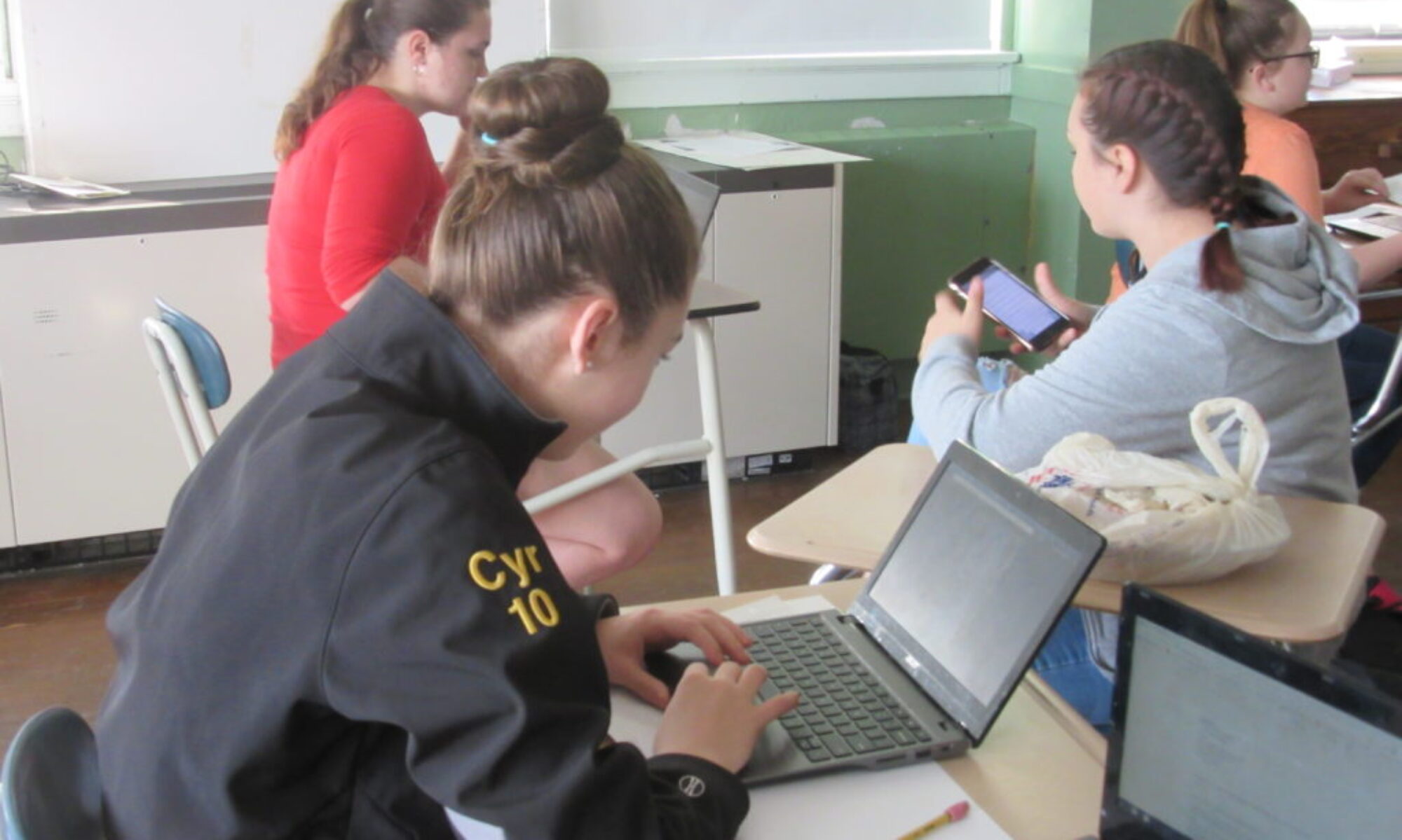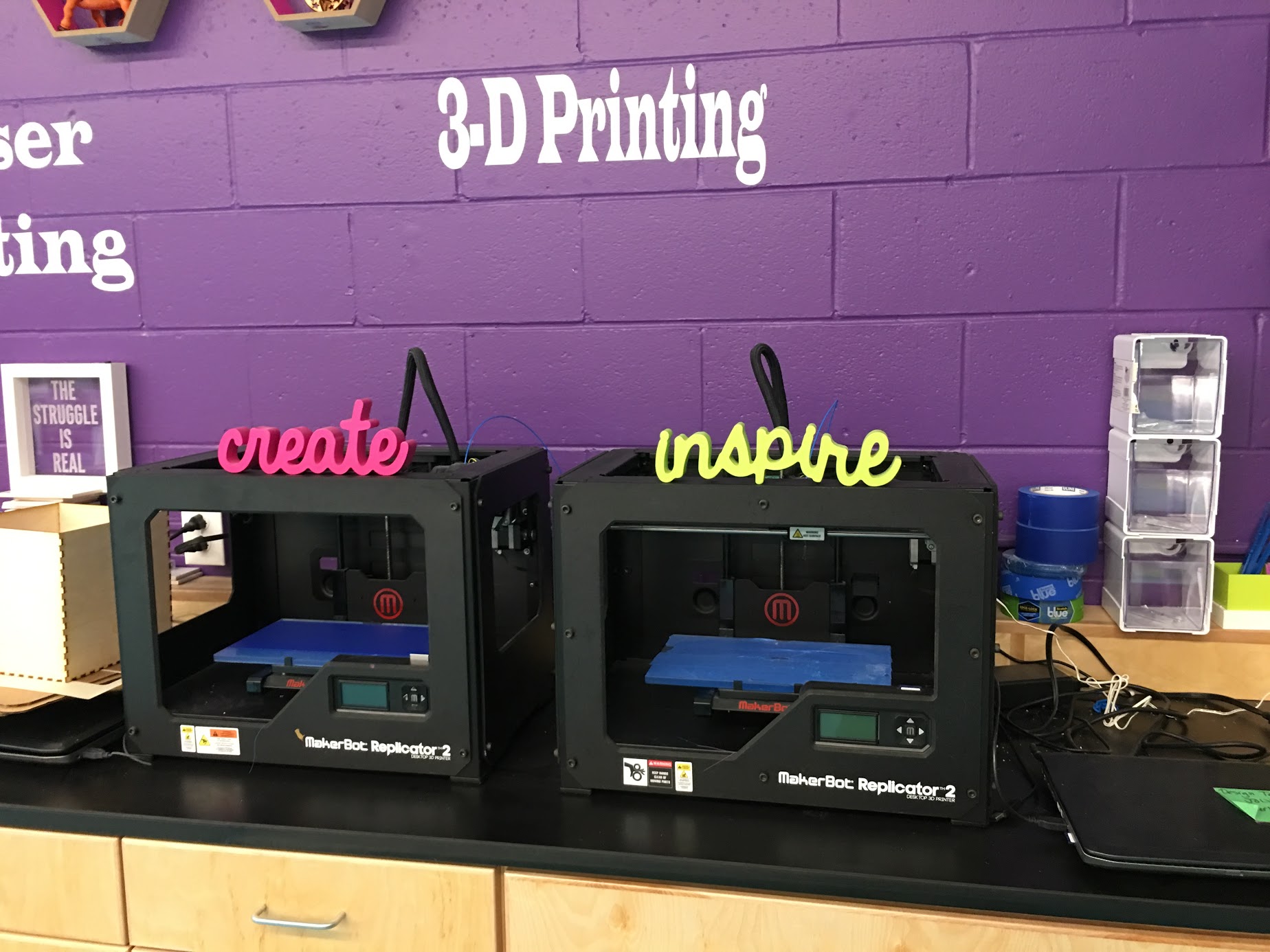It’s that time of year again! Time for New Year’s resolutions!
Could you use a little boost as we kick off the new year? Then why not visit your school’s makerspace? Did you know that you can use your makerspace for instructional shifts?
This includes shifts to:
- project-based learning;
- more constructivist learning;
- learner-centered learning;
- more student voice and choice;
- universal design for learning.
There’s a reason that more health club membership sales occur in January. And those reasons are very similar to the reasons a makerspace can help you stay on track with your instructional shifts in 2020!
Health clubs provide support and remove barriers towards reaching your goals. They’re stocked with tools you might not have at home (due to cost or space). They’re filled with inspiration and community working towards their own personal goals. And there are personal trainers with expertise available if you need a little help getting started or getting ‘unstuck’.
Are you working on a shift towards a more constructivist learning environment?
We all know that “they who do the most work, do the most learning”, yet so often we as teachers feel we need to know ‘how’ to do every tasks we expect our students to complete. Sometimes our inner voice prevents us from moving forward with a new idea. “If we don’t know ‘how’ to do it ourselves, how will we help them when they get stuck.” It’s hard to shake the imposter syndrome that comes when everyone in the room looks to you to be the expert. Sometimes our students expect us to have the answers.
In a makerspace, the expectations shift.
The tools are not the same ones found in traditional classrooms. The understanding is that these are “new” tools and “old” tools with new possibilities and that we will be learning together. We will be learning ‘just in time’ as we need, rather than “just in case” we might need this skill someday. Students step up to the plate to figure out how to use a new tool or process and are happy to show you what they figured out.
Are you trying to make the shift towards more project based learning?
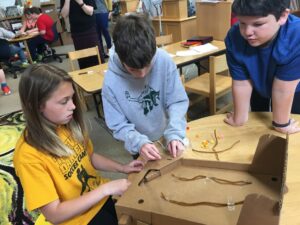
Do you have an idea for designing a project based learning experience, but wondering where you will get the tools or expertise to pull it off? Are you concerned about the space for creating and making projects, or perhaps for storing projects in progress? Are you wondering where you might find the supplies you’ll need? A school makerspace might not have every tool or supply you need, but they can remove some of the barriers. When you need a hole punched in a plastic bucket, someone pulls out a hand drill. Or someone adds it to the list of tools that you need to get.
Sometimes a quick shout-out to our school community brings in just the tools or expertise you need. Many parents, grandparents, and community members have tools they no longer need or skills they’d like to share. And many would be more than willing to share their skills or be an extra set of hands during project time. Engaging your community? Is using your makerspace for instructional shifts.
Are you looking for ways to include more inquiry based learning in your classroom?
Makerspaces in our schools are evolving. They are not a silver bullet. You might not find all the “answers to life’s most persistent questions” — but what you will find is a MAKER MINDSET. In most school makerspaces, you will find design thinking at play, where both students and educators are asking questions that start with those powerful 3 words – HOW MIGHT WE?
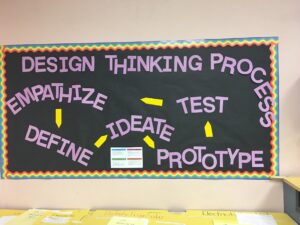
- How might we store student projects in a way that makes it easier for them to continue their projects over time?
- How might we create an artifact that uses light to helps us visualize the impact of our personal use of plastics across the world?
- And how might we create a learning experience that plays to the strength of learners not currently being reached in our classroom?
Makerspaces provide some very tangible hands on ways to learn design thinking.
What starts off with a straightforward design challenge — “How might we create a cardboard chair that meets the needs of a storybook character or puppet?” becomes a challenge for moving towards real-world problem-solving.
It’s the first question in an inquiry that winds up being more along the lines of: “How might we spend more time on the mountain and less time getting everyone on the bus that goes to the mountain on our school ski days”?
Do your goals include a shift towards more student choice and voice?
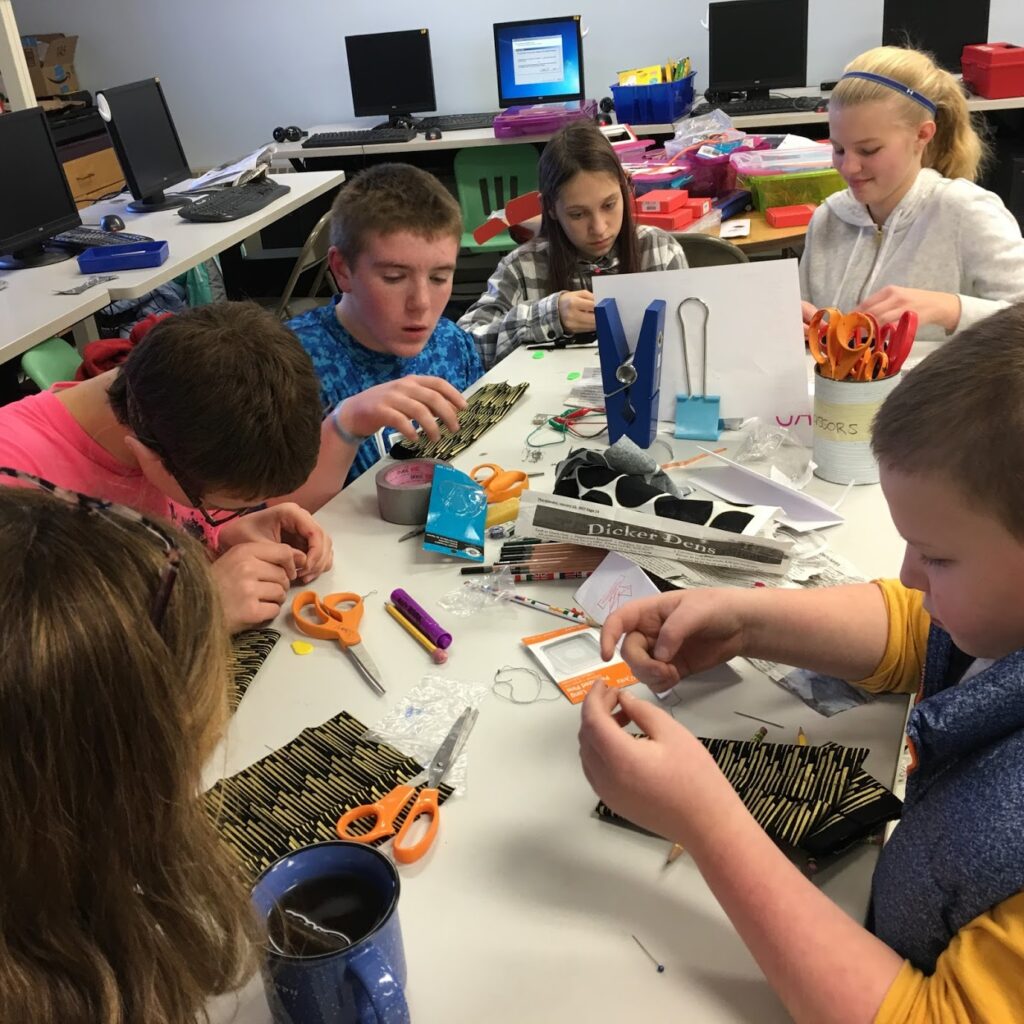
Makerspaces can provide your students with the inspiration they need to move beyond a PowerPoint presentation as a way to show what they know. As you walk through a school makerspace, the materials and tools available might be just what you need for them to come up with new options for student choice.
- Does the green screen inspire you to create movies with settings in places you can’t travel to?
- Does a microphone and wind-shield inspire an idea for a podcast episode?
- Or does a 3D printer inspire your students to design a new solution to a pesky problem?
- Does a sewing machine inspire an idea for designing a new wearable?
- And that a pile of cardboard and some cardboard tools: can you imagine some new prototypes?
We all need inspiration!
Take a walk to your school’s makerspace and take the time to play with materials and tools? Take on a few creativity sprints? Something as simple as “How many ways can you think of for using a paperclip?” can reach a whole new level when you try them in a school makerspace..
Are you looking for tangible ways to reach more students through Universal Design for Language?
A makerspace can provide educators for new options for creating multiple means of representation. What if you could 3D print a calculus equation to students could feel it between their fingers? What if you could laser-cut a puzzle that helps students learn new vocabulary?
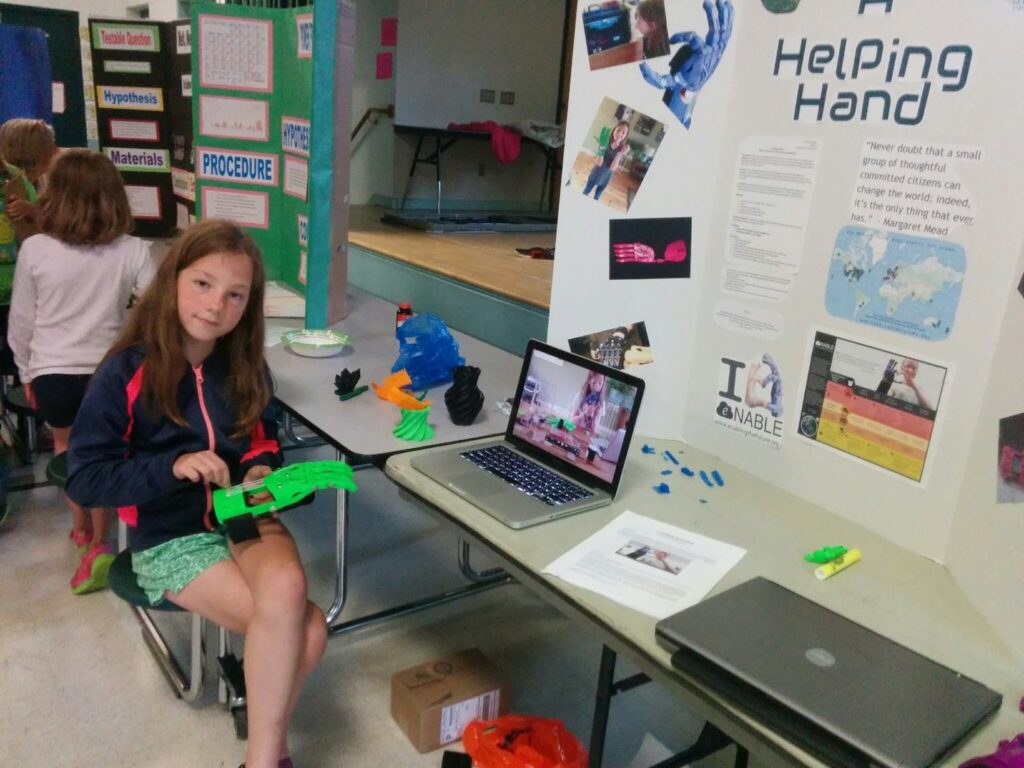
A makerspace can provide students with multiple means of expression.
Might students use paper circuits to illuminate a statement related to their current unit of study? Could students use micro-processors to create an interactive poster? Might they build a 3D printed model of a solution that might enable others. Could they build a cardboard prototype of an invention or design a 3D model of a tool from a historical era?
A makerspace environment is the perfect setting for multiple means of engagement.
Just as a health club might be the perfect place to help with your personal New Year’s resolution, a makerspace can help you with your professional resolution. Use your makerspace for instructional shifts you know are good for kids. A makerspace can provide support and remove barriers towards our goals.
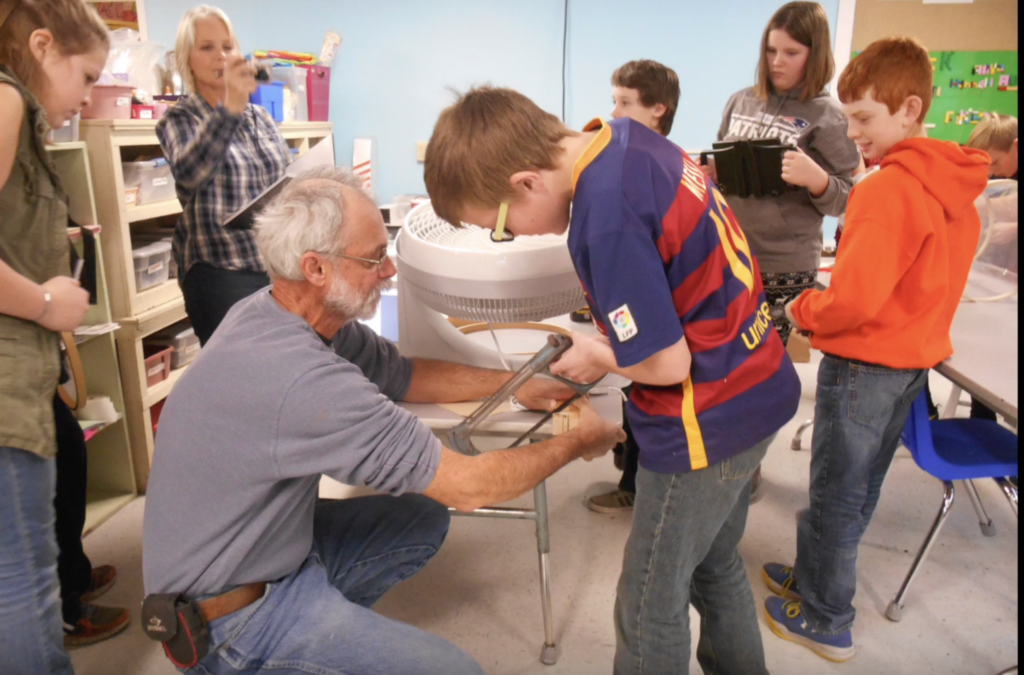
What are you waiting for?
Is there a makerspace in your school or community that could help you meet your goals in 2020? If not, why not make your new year’s resolution creating one in your classroom or school?
